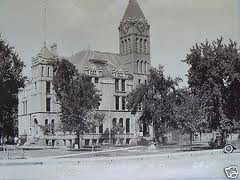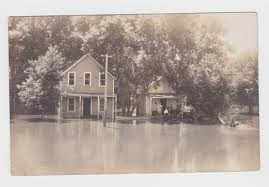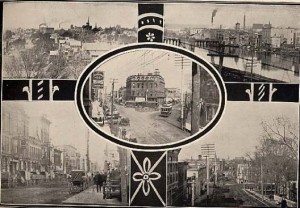Canton, South Dakota was an extremely small town of around 100 people in the 1870s, when it consisted mainly of vacant lots. By 1880, more than 600 people lived there; the city was incorporated a year later and began to build in earnest. Residents were affected by the weather just as isolated settlers were, losing their crops to grasshopper infestations and enduring bitter cold and arid droughts. Continue reading
Tag Archives: Canton South Dakota
Community Support
Despite his stated desire to save the Indian Office money (see last post), Dr. Harry Hummer was desperately anxious to increase the size of the Canton Asylum for Insane Indians. Though he had a hard time justifying any great expansion due to a long waiting list of insane Indians, he was on firmer ground in trying to buy more land for the cattle and swine the asylum raised. He asked Commissioner of Indian Affairs, Charles Burke, for additional acreage as soon as Burke took office. As always, Hummer mentioned that there was a waiting list of 15 to 20 patients that could not be admitted due to lack of space. And, as always, the Commissioner replied that the Indian Office did not wish to increase the capacity of the asylum.
Hummer knew how important the asylum was to the Canton community, and did not hesitate to play politics. Within just a few days of Burke’s refusal, Canton’s Martin C. Ellingson Post of the American Legion wrote to Senator Peter Norbeck about the issue. Post commander S. A. Amundson said: “Our attention has been directed to the necessity of the purchase of additional land absolutely essential for the expansion of the Asylum for insane Indians located at Canton, South Dakota. After due investigation the committee is convinced that . . . the purchase of additional land is absolutely imperative.”
In his letter, Amundson reminded Norbeck that the post represented “two hundred of the best business and professional citizens of our community” and that they earnestly solicited “your hearty co-operation in securing for this institution, the purchase of additional land, so necessary for its expansion and maintenance.”
______________________________________________________________________________________
How Unusual Was Canton Asylum?
Though early asylum superintendents in the U.S. had to both establish their profession and learn how to run asylums, they generally had at least some experience working in large institutions. Superintendents were medical men who usually acted as the asylum’s chief physician, and supervised assistant physicians and attendants. The Canton Asylum for Insane Indians was unusual in that its first superintendent had no medical background whatsoever, and had never managed anything more complex than his own small business.
Gifford was born in New York, and spent part of his childhood in Wisconsin, and later, Illinois. He served in an Elgin, Illinois unit during the Civil War, then studied law. He became a merchant and surveyor, and eventually a lawyer and a territorial delegate (from Dakota Territory). After a distinguished career, during which he helped guide South Dakota to statehood, Gifford was elected South Dakota’s representative to Congress. After he had moved back to Canton, South Dakota (where he had once been mayor), Gifford became superintendent of Canton Asylum.
______________________________________________________________________________________






